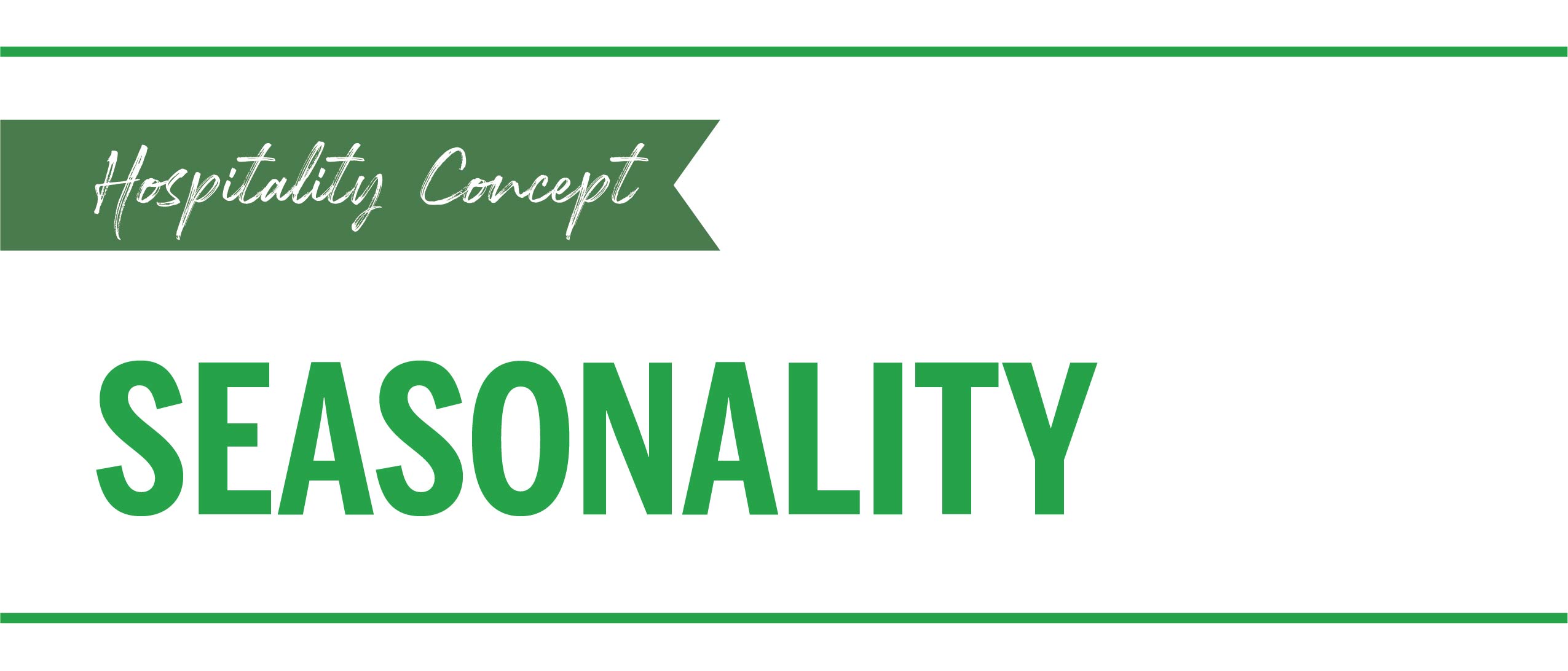13.14: Seasonality
- Page ID
- 11455

This section was written by Jan Thompson & Gary Melville.
What is Seasonality?
We all have likely seen pictures of or possibly experienced Aspen or Salt Lake in the winter, Cancun or Miami during spring break, Carnival in Rio or Trinidad and Tobago, Mardi Gras or Jazz Fest in New Orleans, or the Super Bowl. They are all examples of seasonality in tourism. Despite the rapid growth experienced in global tourism (UNWTO, 2019), the issue of seasonality remains an important characteristic of the sector (Ćorluka, 2019). A popular definition of seasonality is that of Butler (1998) who defined seasonality as a “temporal imbalance in the phenomenon of tourism which can be expressed in the number of visitors, their expenditure, traffic on different forms of transportation, employment, and admissions to attractions.” In this sense, seasonality presents an economic problem, as it affects supply and demand in tourism. It also represents environmental and social challenges related to peaks and troughs in the use of resources, facilities, and attractions (Lee, Bergin-Seers. Galloway, O’Mahoney and McMurray, 2008). Hospitality managers must have a keen sense of understanding the causes and implications of seasonality to be able to develop and apply strategies to mitigate the impacts caused by fluctuations in visitor counts throughout the year.
Causes of Seasonality
Seasonality affects all types of tourism destinations and enterprises (Lee et al. 1980). The factors that cause seasonality in tourism can be grouped under national or institutional/cultural factors (Lee et al, 2008, Corluka, 2019). Natural factors involve variations in weather, climate, and seasons of the year (Lee et al, 2008) that are responsible for differences in rainfall, temperature, snowfall, daylight, and sunlight (Weidner, 2006). Tourism activities, especially outdoor ones, require certain weather conditions to be enjoyable (Shih and Nicholls, 2011). Activities like hiking, swimming, diving, sports, sun tanning, and beach relaxation are affected by weather and climate and this affects travel patterns. Institutional and cultural factors also (Lee et al 2008) play a significant role in the seasonality effect. These factors include religious and public holidays like Easter, Christmas, and Ramadan, the timing of school holidays, availability of leisure time, state of the economy, and sporting seasons and events like annual golf and tennis tournaments.

Photo by AlyssaSieb on Nappy
Impacts of Seasonality
The main impacts of seasonality on tourism destinations and enterprises are negative though there are some positive outcomes (Ćorluka, 2014, Butler, 1998). These impacts can be economic, ecological, and socio-cultural. Economic impacts of seasonality include the fact that the peak season revenues must exceed annual fixed costs. Hospitality organizations in highly seasonal destinations must combat the shortage of capacity, higher cost of supplies, over-utilization of resources, and increased costs of recruitment during the peak season, while managing underutilization of resources and staffing cuts in the low period. Moreover, the income instability resulting from seasonality impacts return on investment and investor confidence (Lee et al. 2008).
Regarding employment, the variability of demand for workers between the high and low periods affects the retention and development of employees (Lee et al. 2008). This can cause enterprises to lose skilled employees and affect service quality and employee-employer relationships. The demand on natural resources such as beaches, rivers, and forests during peak season can lead to pollution, disturbance of wildlife, sewage problems, and natural resource exhaustion (Ćorluka, 2014.)
Communities in seasonal tourist destinations also face socio-cultural challenges related to the social carrying capacity (Lee et al, 2014). These include noise, slower traffic, congested public spaces, crowded streets, and disruption to quality of life, as well as increased costs of goods and services during the high season. The impacts of seasonality are not all negative as during the low season, communities revert to the quality of life they desire, accommodations and attractions can do maintenance and repairs and natural resources have a recovery period (Butler, 1998, Lee et al 2008). Additionally, the high season provides employment for parents of young children, students, and other part-time workers. Some hospitality workers “chase” the seasons, traveling to find work in different regions as the peak season arrives. They may spend winter in Salt Lake City, Utah, move to Miami, Florida for the spring, and enjoy the summer in Southern California. This is a great way to determine what a worker likes and dislikes about the hospitality industry and learn about different types of operations.
Mitigation Strategies
Seasonal tourism patterns usually remain stable for many years (Ćorluka, 2014, 2019). Providing an element of predictability associated with seasonality that enables managers to develop strategies in anticipation of the challenges faced in the high and low seasons. One group of strategies revolve around increasing demand outside the high season. These strategies include differential pricing, changing the product mix, market diversification, and selective forms of tourism.

Photo by Joshua Alfaro on Unsplash
References
Butler, Richard (1998). “Seasonality in Tourism: Issues and Implications”. The Tourist Review, Vol. 53, No. 3, pp. 18-24
Ćorluka, Goran (2019). “Tourism Seasonality – An Overview. Retrieved from https://www.researchgate.net/publication/336085306_TOURISM_SEASONALITY_-_AN_OVERVIEW
Ćorluka, Goran (2014). “Seasonality in Tourism – Causes, Implications and strategies. Retrieved from https://www.academia.edu/8670280/SEASONALITY_IN_TOURISM_causes_implications_and_strategies
Lee, C Bergin-Seers, S, Galloway, C, O’Mahoney, B and McMurray, A (2008). Seasonality in the Tourism Industry: Impacts and Strategies. Retrieved from https://coastaltourismacademy.co.uk/uploads/CRC_Queensland_2008_Seasonality_in_the_tourism_industry_(2).pdf#:~:text=Seasonality%20is%20a%20concept%20that%20is%20well%20studied,in%20tourists%20and%20visitor%20numbers%20to%20a%20destination.
Shih, C., and Nicholls, S. (2011). Modelling the Influence of Weather Variability on Leishure Traffic. Retrieved from https://www.researchgate.net/publication/233699069_Modeling_the_Influence_of_Weather_Variability_on_Leisure_Traffic
UNWTO, (2019). “Global and Regional Tourism Performance”. Retrieved from https://www.unwto.org/global-and-regional-tourism-performance
Weidner, Stephan (2006). Seasonality in Tourism: A Review of Seasonality of Hotel Accommodation in New Zealand. Retrieved from https://www.grin.com/document/122991#:~:text=Seasonality%20in%20tourism%3A%20A%20review%20of%20seasonality%20of,...%206%20Statistical%20Data.%20...%207%20Methodology.%20

